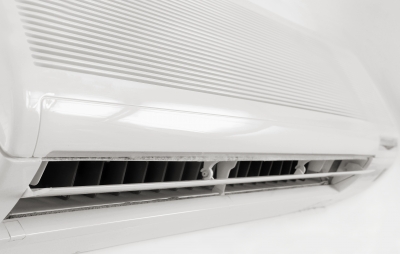Though the most obvious and essential function of an air conditioner is for cooling, there are several other things it should also be accomplishing. Ultimately, a properly running air conditioner should cool, clean, ventilate, heat, dehumidify and humidify as required to keep surrounding spaces comfortable and healthy.
Ventilation
Next to cooling, the most important function of an air conditioner is that of ventilation. No matter if an actual air conditioner serves to ventilate a room, there is no doubt that ventilation is vital. When ventilation is lacking, multiple types of indoor contaminants will cause substantial issues with regard to health and comfort of those nearby. According to ASHRAE, a room needs sufficient ventilation to conduct a full exchange of indoor air at intervals no greater than four hours, depending on the specifics of the house in question.
Because older structures tend to be characterized by leaky ducts and walls, such homes usually have a sufficient amount of ventilation through those alone. However, this type of ventilation is not efficient from an energy savings standpoint, and a different approach may yield real benefits.
Newer builds are often much more tightly constructed and therefore need mechanical assistance in order to achieve appropriate amounts of ventilation.
Humidity Control
To the surprise of many, the true reason for the creation of air conditioning was to accomplish humidity control indoors. A failure to properly control indoor humidity in hotter, damper climates can produce serious mold growth problems. When humidity levels rise indoors, serious issues with comfort and health can arise.
Air conditioners of the modern era work to dehumidify the air as well as cooling it. This is evidenced by the water that drains from the unit. The process of dehumidification runs in conjunction with the process of cooling. It is impossible for an air conditioner to perform one function without doing the other.
In locales known for high heat and humidity, the incidental effect of dehumidification resulting from air cooling may be insufficient to maintain healthy moisture levels indoor. According to ASHRAE, optimal humidity is capped at 60% at a temperature of 78 degrees F. The greatest amount of dehumidification occurs not during the warmest months of the year, but rather at milder times when the air conditioning unit runs less.
While some state-of-the-art air conditioners claim that they can control humidity on an independent basis, typical units will likely be unable to do so effectively. Thus, health, mold and comfort issues may develop. Certain top-of-the-line systems provide enhanced levels of dehumidification, but if they prove unable to properly regulate indoor humidity, a free-standing dehumidifying unit may be required.
Individuals can take certain steps to reduce their need for additional dehumidification, including:
1) Never use the “fan on” setting on your thermostat. When this feature is utilized, the fan will blow air continuously, regardless of whether the cooling feature is engaged. Much of the moisture already removed by the system can thus be re-blown into the home prior to dissipating.
2) Make liberal use of exhaust fans when ambient moisture is created through activities such as washing, cooking, showering and similar tasks. These things can all produce a great deal of excess moisture. It is important to send that moisture outdoors directly with a fan. Also, try not to dry clothing indoors unless a directly exhausted dryer is used.
3) Avoid opening windows or use ventilated cooling methods when outdoor humidity is high.